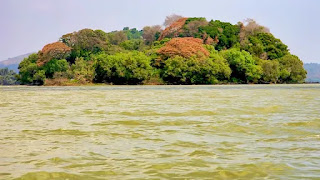I told my son about how after his conversion to Christianity in the forth century King Ezan of the Kingdom of Aksum (modern day Ethiopia) immediately set out to start creating monasteries, putting them in the most remote of locations, for they knew to preserve what they had been given.
"Well every kingdom knows of others that have fallen before them,
so they were probably just trying to preserve their own."
(Or something to that effect.)
I said I don't think so,
I think they knew what they had been given
and that the day
(Or days)
would come
when its preservation would be of utmost importance.
(As in right now.).
It wasn't the Kingdom they were concerned with preserving,
it was the word.
Witness:
1 Enoch
(Ethiopic)
81:1-3
1 Now, my son Mathusala, all these things I speak unto you, and write for you. To you I have revealed all, and have given you books of everything.
2 Preserve, my son Mathusala, the books written by your father; that you may reveal them to future generations.
3 Wisdom have I given you, to your children, and your posterity, that they may reveal to their children, for generations for ever, this wisdom in their thoughts; and that those who comprehend [it] may not slumber, but hear with their ears; that they may learn this wisdom, and be deemed worthy of eating [this] wholesome food.
Dabba Selama Monastery
(Arrows point to ladders to the entrance ways of the monetary)
13°41.67′N 39°6.03′E is given as its location
because the nearest road is like 18 miles away.
"The almost inaccessible Dabba Selama monastery (13°41.67′N 39°6.03′E) is assumed to be the first monastery established in Ethiopia, by Saint Frumentius. The intrepid visitor will climb down, then scramble over narrow ledges along precipices, and finally climb an overhanging cliff."
It also explains why in a later period
churches were carved out of stone.














No comments:
Post a Comment